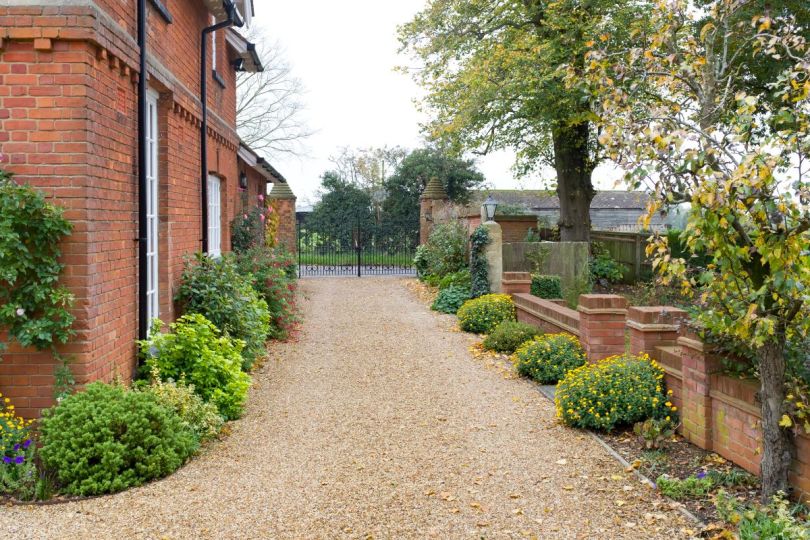
What makes us feel safe at home?

In an age of smart locks and community WhatsApp groups, our definition of safety at home is constantly changing – our latest Housing Futures survey reveals a generational divide in what really makes us feel secure.
For some, reassurance lies in community and human connection, a friendly neighbour or having a village café close at hand. For others, safety is found in technology and visibility, through cameras, apps and smart devices.
The response to our survey tells us a lot about what really drives each individual’s sense of safety today, and how this is influencing the way we choose how to live.
Among those aged 66 and above, safety is often rooted in connection and familiarity. Nearly half (47%) said knowing their neighbours is crucial to feeling safe – a figure that drops to under 30% among 18 to 34-year-olds. For this older age group, reassurance and security can be established by the feeling that there’s someone looking out for you, a support network nearby who can check in and notice if something’s amiss, or a neighbourhood watch programme that keeps an eye on local activity. With nearly a third of older movers expecting to live alone in their next move, it’s little surprise that living near to a trusted network becomes even more important, whether that’s family, neighbours or on-site staff.
“It’s no surprise the human factor ranks most highly among the over 60s”, says Steve Bangs, CEO of Pegasus Homes. “These generations were brought up in times of more people and community-centric living compared to the last 20 or so years. And the value of a neighbour or familiar face that knows the person, has an understanding of how they spend their day and can pick up on subtle hints when something is not right, can’t be understated.
“For many of our residents, it is the people at our communities - our onsite team and like-minded neighbours - that make them feel so safe and secure.”
Anne, a resident at one of Pegasus Homes’ communities explained: “In a community like this, I’m not on my own. I have someone I can call on, a neighbour, people I can trust and who would help me. It’s like an inbuilt security system!”
The survey also found that local cafés and village pubs are particularly highly valued among over-65s, especially in rural settings where they often serve as the heart of the community, rather than a quick serve amenity. Volunteer-run coffee shops have sprung up across the countryside in recent years, evolving into vital social hubs where residents can connect and build relationships.
It’s not only cafes and pubs that are high on this demographics’ wish list though; shared social spaces in all their forms are important, and it’s something that is shaping the later living sector. An increasing number of developments now include shared lounges, communal gardens, cinemas and libraries, creating a social lifeline for residents. Interestingly, the on-site teams here are also crucial. Over half of those aged 66 and above who rent do so for the ease and reassurance of managed living, knowing support is always available.
“Shared communal spaces are central to our communities and one of their biggest draws for this very reason”, Steve adds. “Areas like the lounges act as an extension of residents’ homes where they join events and activities or meet up informally to share a glass of wine over a film. It’s here that new friendships are formed, and neighbours become people that you know and look out for.
“These spaces are carefully considered and designed to encourage and foster interaction, naturally day-to-day, helping residents make and maintain these all-important connections.”
In contrast, 18 to 34-year-olds tend to view safety through a technological lens. For them, peace of mind often means control and visibility, as well as being able to monitor and manage their home from anywhere.
Almost half of this age group said CCTV is what improves their feeling of safety, and 28% prioritise smart technologies, such as biometric locks or remote access. Some are even turning to more innovative solutions, such as security smoke systems that release dense fog to halt intruders.
“Younger buyers are pragmatic and technological, they want efficient, tech-driven solutions that offer real-time reassurance,” explains Matthew Henderson, Residential Research lead at Strutt & Parker. “They’re more likely to live in urban areas, where crime perception is higher, so technology becomes their buffer and a way to feel in control. Incidentally, tech may be driving the need for safety; social media may well play a role in this too. Viral clips of street thefts and high-profile crime stories certainly fuel a heightened awareness of safety.”
At the top end of the market, safety is increasingly seen as an essential investment. From hidden panic rooms to intricate camera and alarm systems, many high-net-worth homeowners are going far beyond the basics.
“It’s not uncommon to see homeowners bring in specialists in the super-prime market,” explains Jordan Sturgess, Senior Associate Director in the National Country House Department. “These teams are the equivalent of private investigators - they analyse how families live, map potential vulnerabilities and identify where the gaps lie. For them, it’s about ensuring complete peace of mind.”
Modern security is now often integrated into home design, from smart systems that control gates and lighting, to 24/7 surveillance and glass break sensors. For some high-net-worth movers, they wouldn’t consider moving into their new home until this tech is all in place.
Whether it’s the comfort of community or the convenience of smart tech, our idea of safety is deeply personal. Yet across all age groups, one thing remains constant: the desire for peace of mind – that sense of being safe, supported and secure – in wherever we call home.
